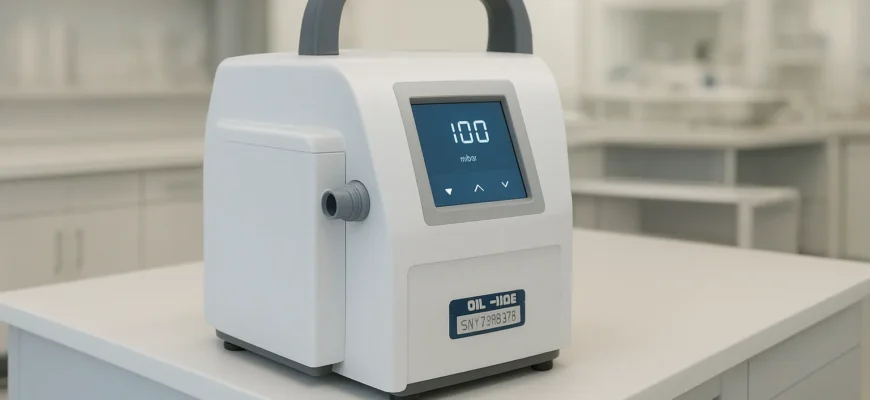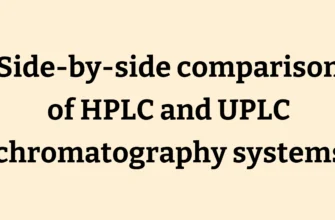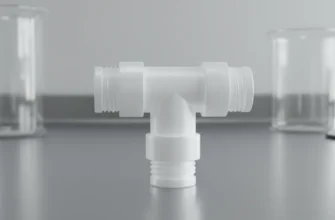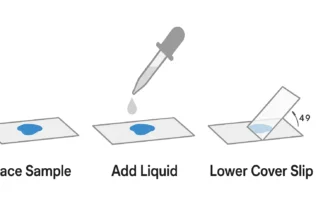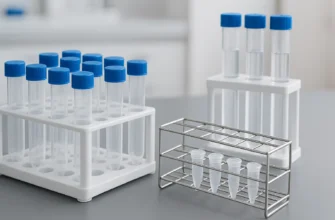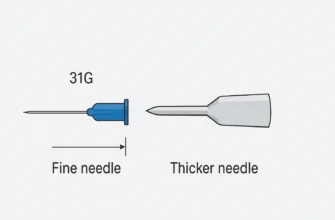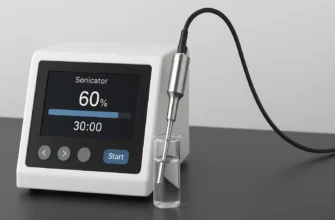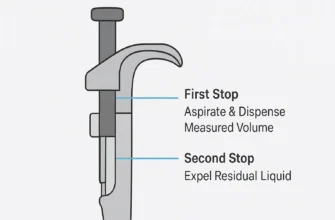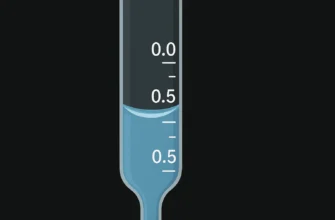Essential Guide to Vacuum Pump and Lab Supply Solutions
Key Highlights
A vacuum pump is an essential piece of laboratory equipment for a wide range of applications. The main types of pumps include rotary vane pumps and diaphragm pumps. Common uses range from vacuum filtration and rotary evaporation to mass spectrometry. Choosing the right pump involves matching its specifications to your specific lab application. Oil-free models like diaphragm pumps are suitable for most uses, while oil-sealed pumps provide deeper vacuum. Proper maintenance and accessories are key to dependable performance.
Introduction
Welcome to the essential guide for understanding vacuum pump and lab supply solutions. A vacuum pump is a core piece of laboratory equipment, vital for countless scientific processes. From filtering mixtures to evaporating solvents, these devices are the unseen workhorses in many labs. However, with so many options available, choosing the right one can feel overwhelming. This guide will walk you through everything you need to know about selecting, using, and maintaining the perfect vacuum pump for your lab applications.
Understanding Laboratory Vacuum Pumps and Their Applications
At its core, a laboratory vacuum pump works by removing air and other gas molecules from a sealed container, creating a low-pressure environment. This vacuum is fundamental for various testing and analytical processes. The type of vacuum system you need differs based on the specific task, whether it requires a rough vacuum or fine vacuum.
Understanding the different kinds of pumps and their primary functions is the first step toward making an informed choice. From simple filtration to complex analytical instruments, the right vacuum pump ensures your processes are efficient and your results are accurate. The rough vacuum range (atmospheric pressure to 1 mbar) covers most laboratory applications, while fine vacuum (1 mbar to 10⁻³ mbar) is required for more demanding processes.
Key Types of Vacuum Pumps Used in Labs
Laboratories utilize several different types of vacuum pumps, each designed for specific needs. The most common are diaphragm pumps, which are oil-free and well-suited for most general lab applications. For tasks requiring deeper vacuum levels, oil-sealed rotary vane pumps are the traditional choice.
Other vacuum pump types include scroll vacuum pumps and liquid ring pumps, which offer unique benefits for particular processes. Dry scroll pumps provide an excellent oil-free alternative to rotary vane pumps for non-corrosive applications. Your choice depends on factors like the required vacuum level and chemical compatibility.
To help you compare, here are key vacuum specifications for common pump types:
| Pump Type | Typical Ultimate Vacuum | Key Feature |
|---|---|---|
| Diaphragm Pump | 2-100 mbar | Oil-free, can be chemical-resistant |
| Rotary Vane Pump | 2×10⁻³ mbar | Oil-sealed, achieves very low pressure |
| Scroll Vacuum Pump | <1 mbar | Oil-free, durable, and low maintenance |
Common Uses of Vacuum Pumps in Scientific Settings
The applications for vacuum pumps in scientific work are incredibly diverse. In many lab settings, creating a vacuum is essential for processes to work correctly or to speed them up. For example, reducing pressure lowers the boiling point of liquids, which is a principle used in rotary evaporation.
This ability to control the environment within a vacuum chamber allows for more accurate testing and analysis. By removing air molecules that could interfere with a process, researchers can achieve more reliable results in sensitive analytical instruments.
Some of the most common applications include:
-
Vacuum Filtration: Speeding up the process of separating solids from liquids
-
Rotary Evaporation: Gently removing solvents from a sample at lower temperature
-
Mass Spectrometry: Creating high-vacuum environment necessary for ion analysis
-
Vacuum Desiccators: Storing moisture-sensitive materials in a dry, low-pressure space
-
Degassing: Removing dissolved gases from liquids to prevent bubble formation
-
Freeze Drying (Lyophilization): Removing water from biological samples for long-term storage
Selecting the Right Vacuum Pump for Your Laboratory
Choosing the right vacuum pump is about more than just power; it’s about precision. A common mistake is thinking that more vacuum is always better. In reality, selecting a pump with excessive vacuum for your needs can lead to sample bumping, increased noise, and higher service demands. The key is to match the pump’s capabilities to your specific lab work.
For instance, most routine lab applications are perfectly served by diaphragm pumps, while only demanding processes like freeze-drying truly require the power of rotary vane vacuum pumps. Considering your current and future needs will help you decide between different models and their unique vacuum pump specifications.
Factors to Consider When Choosing a Vacuum Pump
To ensure dependable performance, several factors must be evaluated when selecting a vacuum pump. The most critical is the ultimate vacuum, which is the lowest pressure the pump can achieve. You should choose a pump with an ultimate vacuum specification below the pressure level your application requires to operate effectively.
Another key factor is the flow rate, or pumping speed. This measures the volume of gas the pump can move per unit of time. Larger applications or those that produce a high volume of vapor will require a pump with a higher flow rate to proceed efficiently. Failing to match the flow rate can slow down your work significantly.
Consider these critical factors for your applications:
-
Ultimate Vacuum: The lowest pressure your pump needs to reach
-
Flow Rate (Pumping Speed): The volume of vapor the pump can move
-
Chemical Compatibility: Ensure the pump can handle any corrosive vapors from your process
-
Control Options: Decide if you need manual, two-point, or adaptive electronic control
-
Noise Level: Important for pumps located directly within the lab space
Comparing Oil-Free vs. Oil-Sealed Vacuum Pumps
A primary decision in selecting a pump is choosing between an oil-free and an oil-sealed design. For most applications, oil-free diaphragm pumps are the better choice. Oil-free diaphragm pumps provide sufficient vacuum range for tasks like rotary evaporation and filtration, offer low maintenance, and eliminate the risk of oil contamination.
If designed with chemical-resistant components, they can also safely handle corrosive vapors without needing a cold trap. This convenience and reliability make them the go-to choice for the modern lab.
On the other hand, oil-sealed rotary vane pumps are necessary for applications demanding very deep or ultimate vacuum, such as freeze-drying or for use with Schlenk lines. While powerful, they require more maintenance, including regular oil changes every 1,000-2,000 hours depending on operating conditions, and are more susceptible to damage from vapors if not properly protected.
Essential Lab Supply Solutions for Vacuum Systems
A high-performing vacuum system is more than just the pump itself. To ensure your laboratory equipment functions reliably, you also need the right accessories and a solid maintenance plan. From tubing and connectors to gauges and cold traps, these components are essential for controlling your vacuum and protecting your pump from damage.
Sourcing quality parts and understanding the upkeep required are just as important as choosing the right vacuum pump initially. Proper accessories and routine maintenance are crucial for extending the life of your vacuum pump and achieving optimal performance.
Sourcing Quality Vacuum Pumps and Supplies Online
When you need to buy vacuum pumps and lab supplies, turning to a reputable online supplier is a great option. Leading providers offer a wide range of products suitable for many applications, from university labs to industrial research institutions. A good supplier does more than just sell equipment; they provide expertise to help you find the right solution.
Look for a partner who can help you match vacuum pump specifications to your needs to ensure dependable performance. As noted in Lab Manager Magazine, “it is important to carefully consider the applications for which the pump will be used before selecting a particular model”. A knowledgeable supplier can guide you through this process.
When sourcing supplies online, consider the following:
-
Expertise: Does the supplier have experts who can help you choose the right pump?
-
Product Range: Do they offer a wide selection, including top brands?
-
Support: Can they provide guidance on maintenance and accessories?
-
Reputation: Look for established suppliers known for quality and reliability
Accessories and Maintenance for Laboratory Vacuum Pumps
Proper accessories and routine maintenance are crucial for extending the life of your vacuum pump and achieving the ultimate vacuum your process requires. Simple accessories like gauges allow you to monitor pressure, while valves give you control over the vacuum level. For pumps handling corrosive vapors, a cold trap is essential to condense harmful substances before they reach the pump’s moving parts.
Cold traps protect vacuum pumps by cooling, condensing, and trapping harmful vapors before they reach the pump. Without adequate protection, vacuum pumps may experience corrosion from water and acidic vapors, oil contamination, and increased maintenance needs.
Maintenance requirements vary between vacuum pump types. Oil-sealed pumps need periodic oil changes – typically every 500-2,000 working hours depending on conditions. Industry standards recommend changing oil at least every 3,000 hours for pumps running 24/7. Oil-free pumps, by contrast, are known for being low maintenance. However, all pumps benefit from regular checks to ensure they are running correctly.
Key accessories and maintenance tasks include:
-
Gauges and Controllers: For monitoring and managing vacuum levels
-
Cold Traps: To protect the pump from corrosive vapors and liquids
-
Oil Changes: Essential for maintaining oil-sealed pumps every 1,000-2,000 hours
-
Safety Equipment: Including proper PPE, ventilation, and containment systems
Safety Considerations
When using vacuum pumps in laboratory settings, several safety precautions must be observed. Always wear proper PPE such as lab coats, gloves, and safety glasses appropriate for your use. It’s important to check oil levels regularly and keep maintenance records that include oil change dates.
Do not place vacuum pumps in enclosed, unventilated cabinets where heat and exhaust can build up. Ensure pumps have belt guards in place to prevent anything from being caught in the belt, and ensure electrical cords and switches are in good condition.
For chemical applications, always use cold traps to prevent vapors from contaminating pump oil. Many vapors condense in pump oil, degrading performance and creating chemical hazards when oil is changed. Conduct all operations behind a table shield or in a fume hood, and use vacuum exhaust systems that vent to laboratory exhaust ducts.
Conclusion
Understanding the importance of vacuum pumps and lab supply solutions is crucial for maximizing efficiency in any laboratory setting. Selecting the right vacuum pump tailored to your specific needs can greatly enhance your scientific processes, from experimentation to analysis.
For most laboratory applications, oil-free diaphragm pumps provide the optimal combination of performance, reliability, and low maintenance. They are suitable for applications requiring rough vacuum levels (2-100 mbar) and offer excellent chemical resistance when properly designed. Oil-sealed rotary vane pumps remain necessary only for applications requiring fine vacuum levels below 1 mbar, such as freeze-drying and molecular distillation.
Remember to consider factors like maintenance requirements, safety precautions, and the type of pump that suits your applications best. Proper accessories such as cold traps, gauges, and safety equipment are essential for protecting both your equipment and personnel. By investing time in selecting quality equipment and supplies, along with following proper maintenance schedules, you can ensure optimal performance and reliability in your lab.
Frequently Asked Questions
What safety precautions should be observed when using vacuum pumps in the lab?
When using a vacuum pump, always ensure it is appropriate for your applications. Wear proper PPE including lab coats, gloves, and safety glasses. Use cold traps to protect the pump from corrosive vapors and ensure proper ventilation to prevent the buildup of any oil mist in the lab. Regularly inspect tubing and glassware for cracks to avoid implosion under negative pressure.
Can used or surplus vacuum pumps be safely utilized for laboratory applications?
Yes, but with caution. Before using a surplus vacuum pump, verify its history and condition to ensure it can provide dependable performance. It’s vital to confirm that the pump meets the specifications for your intended application and poses no safety risks from prior use with hazardous materials.
How do vacuum desiccators operate in conjunction with vacuum pumps?
A vacuum pump connects to a vacuum desiccator to evacuate the air and moisture from inside the sealed chamber. This creates a dry, low-pressure environment that is ideal for storing moisture-sensitive chemicals and samples, preventing them from degrading due to atmospheric humidity.

